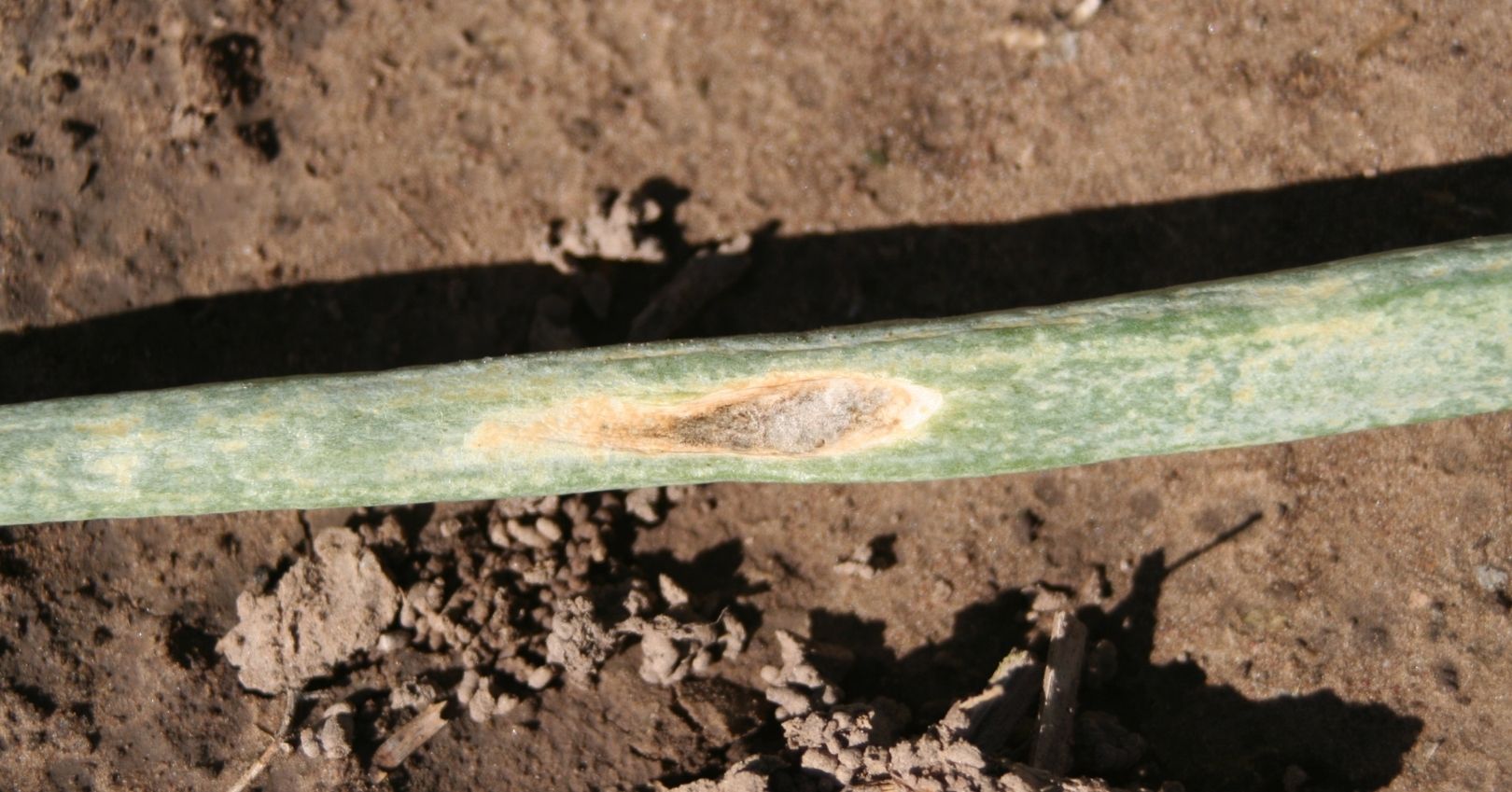Purple Blotch
Stemphylium Leaf Blight



Casual Agents
Purple blotch is caused by Alternaria porri and Stemphylium leaf blight is caused by Stemphylium vesicarium. Both pathogens cause similar symptoms and are managed in the same way.
Symptoms
Early symptoms include small brown elliptical spots on leaves, similar to IYSV lesions, which enlarge over time and may result in brown, necrotic streaks. When Alternaria is the causal agent, the brown lesions will eventually turn purple as fungal spores develop. Lesions caused by Stemphylium often appear dark brown to black from the production of dense masses of spores.
Disease Cycle
These fungi are introduced into onion fields by windblown spores from nearby plants. Within the fields, the fungi persist by surviving on infected plant debris. Optimum temperatures for infection are between 77 to 85°F for Alternaria and 65 to 77°F for Stemphylium. Both pathogens require wounds caused by other diseases (e.g., botrytis), thrips feeding, or hail, to enter the plant. In severe cases, lesions enlarge and coalesce to blight the entire leaf. Spores are produced on the lesions throughout the growing season and disperse to adjacent leaves and plants. As leaves get older, they become more susceptible.
Managment
- Use crop rotation. A 3- to 4-year rotation can reduce the amount of inoculum present and reduce disease incidence.
- Avoid excessive nitrogen. Applications can increase disease severity.
- Bury or dispose culls and other plant debris. Culls and plant debris can be a source for both pathogens and insects that cause wounding on new onion plants. Debris can be buried or disposed of in the trash.
- Use fungicides. There are several fungicides available that can be used to control both pathogens.

